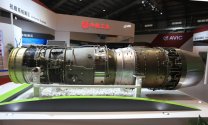I've read the full paper. Nowhere does it say the engine is WS-10A, so unless your source is an insider or has access to inside information, I would be careful in attributing the reliability numbers to WS-10A.
If I'm reading the paper correctly, the MTBF of 150 hours and in-flight-shutdown (IFSD) of ≤0.1 per 1000 flight hours are the navy's reliability requirements for this engine when operating in the harsh salty environment of the subtropics/tropics. However, the paper points out that they have not been able to meet these requirements –– actual MTBF and IFSD figures are 104.4 hours and 2.01/1000hr, respectively. Furthermore, the paper states that they will not be able to meet the requirements in the short term, and so in the meantime, the navy needs to figure out the provisioning rates and quantities of the various spare parts for repairing this type of engine in order to hit their aircraft availability goal.
P.S. It's important to keep in mind that MTBF depends on the definition of what constitutes a failure, which could be as small as the % of ball bearings needing replacement being above a defined threshold.
The paper was submitted in 2017 and was based on "several years of data gathered on SCS islands". This must be an early variant of WS-10, probably used on J-11BH.


